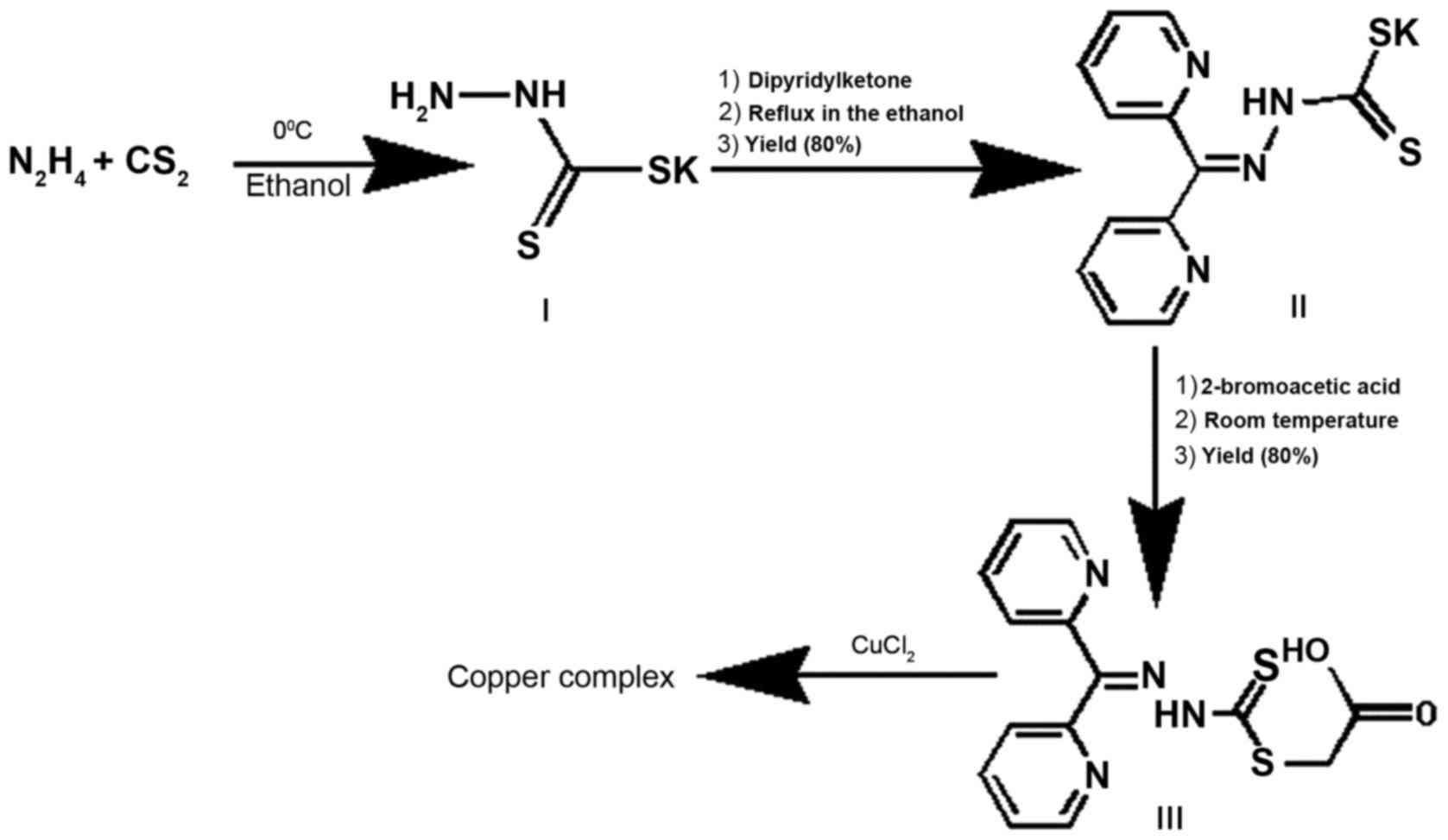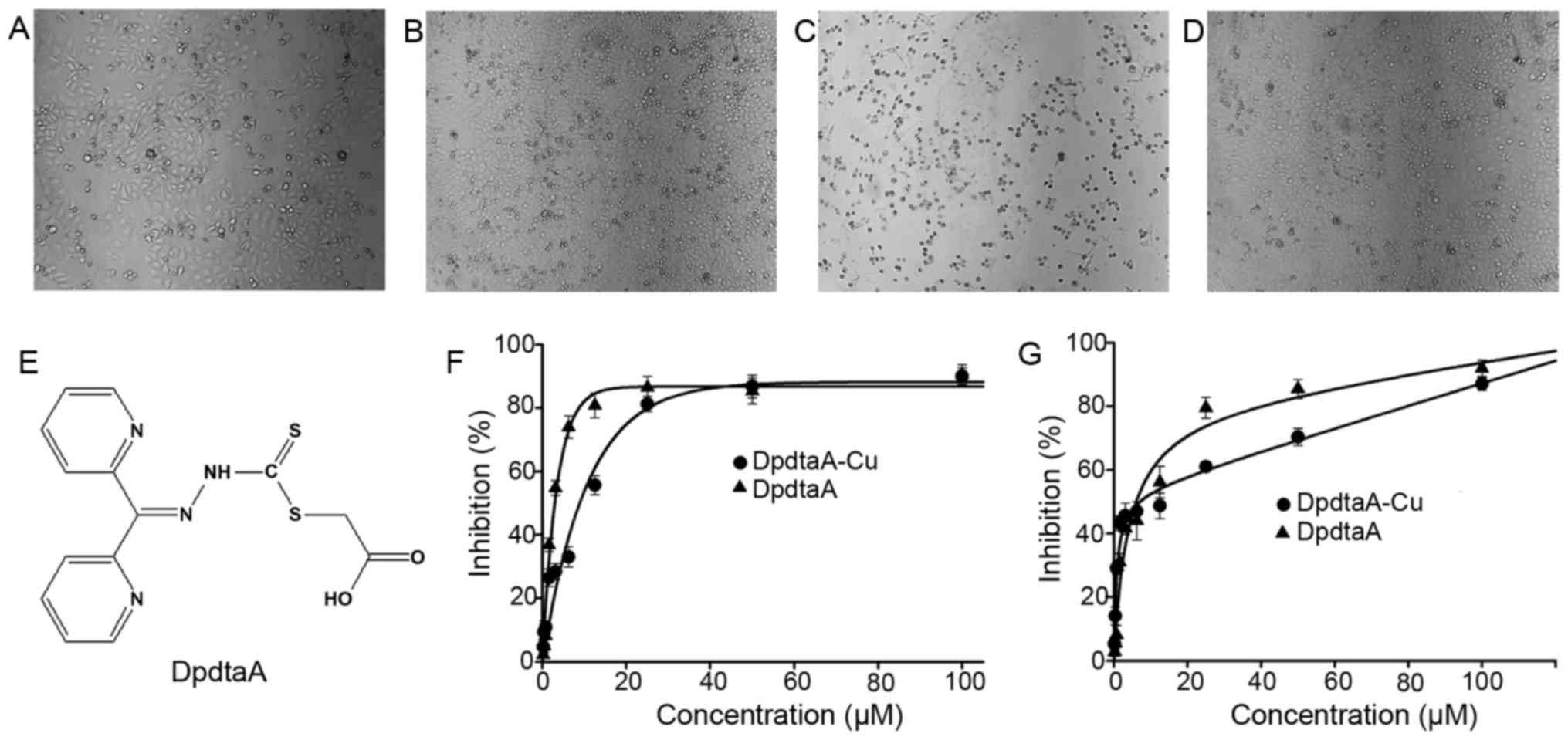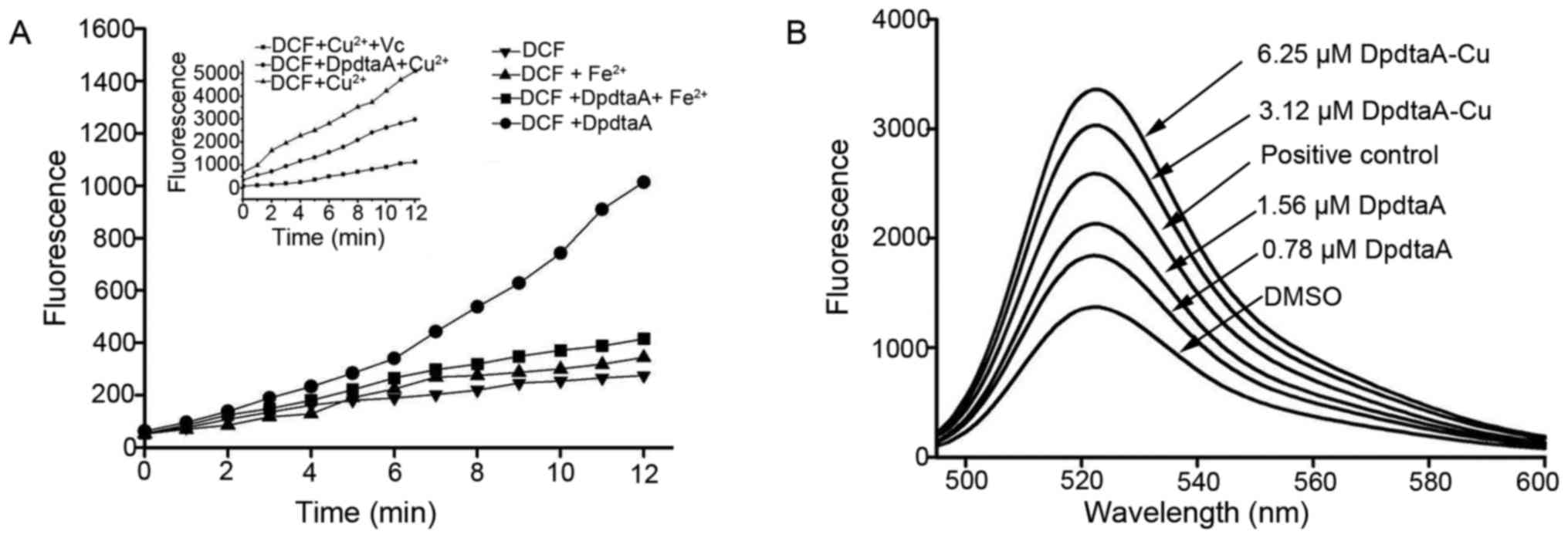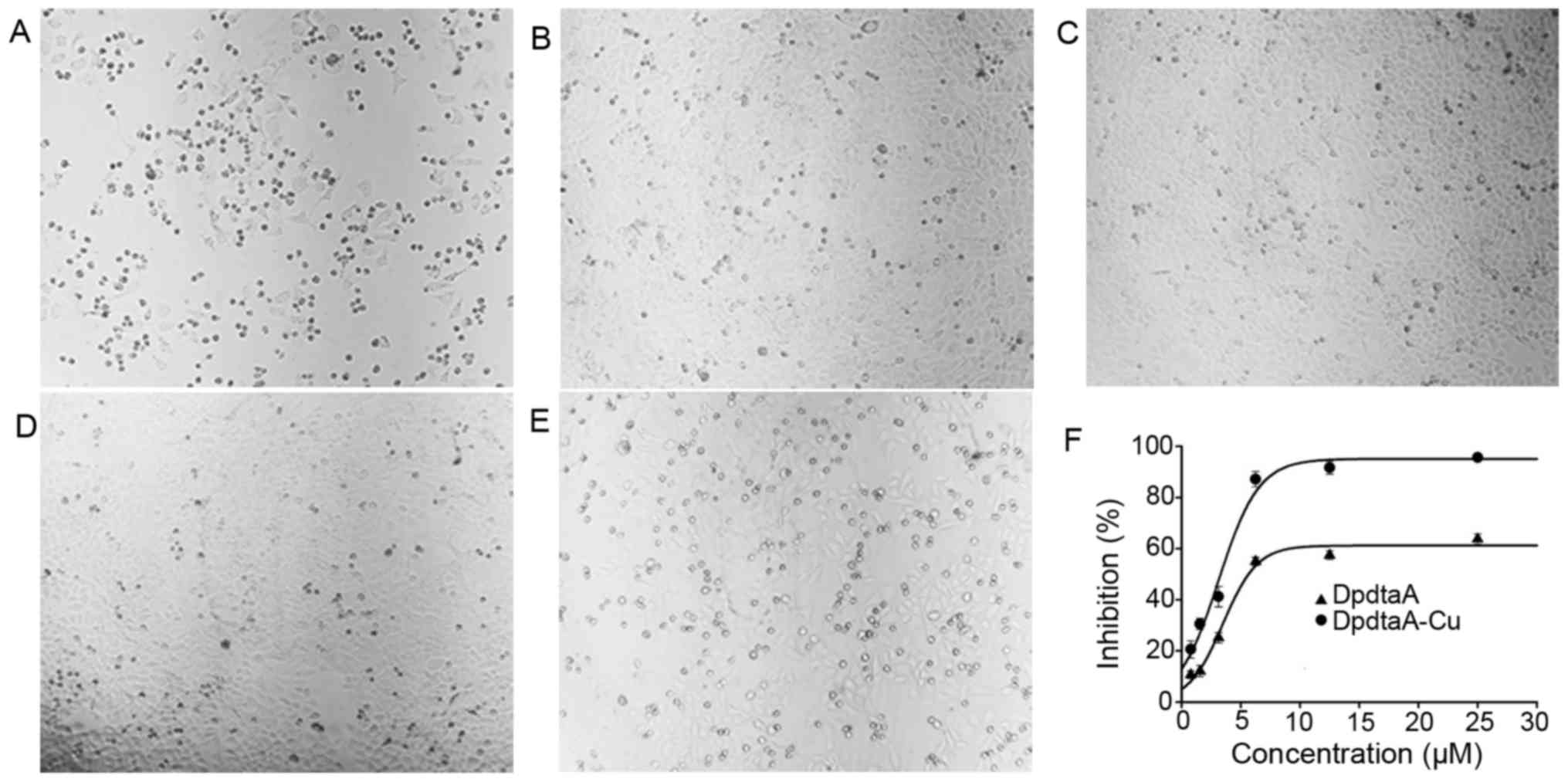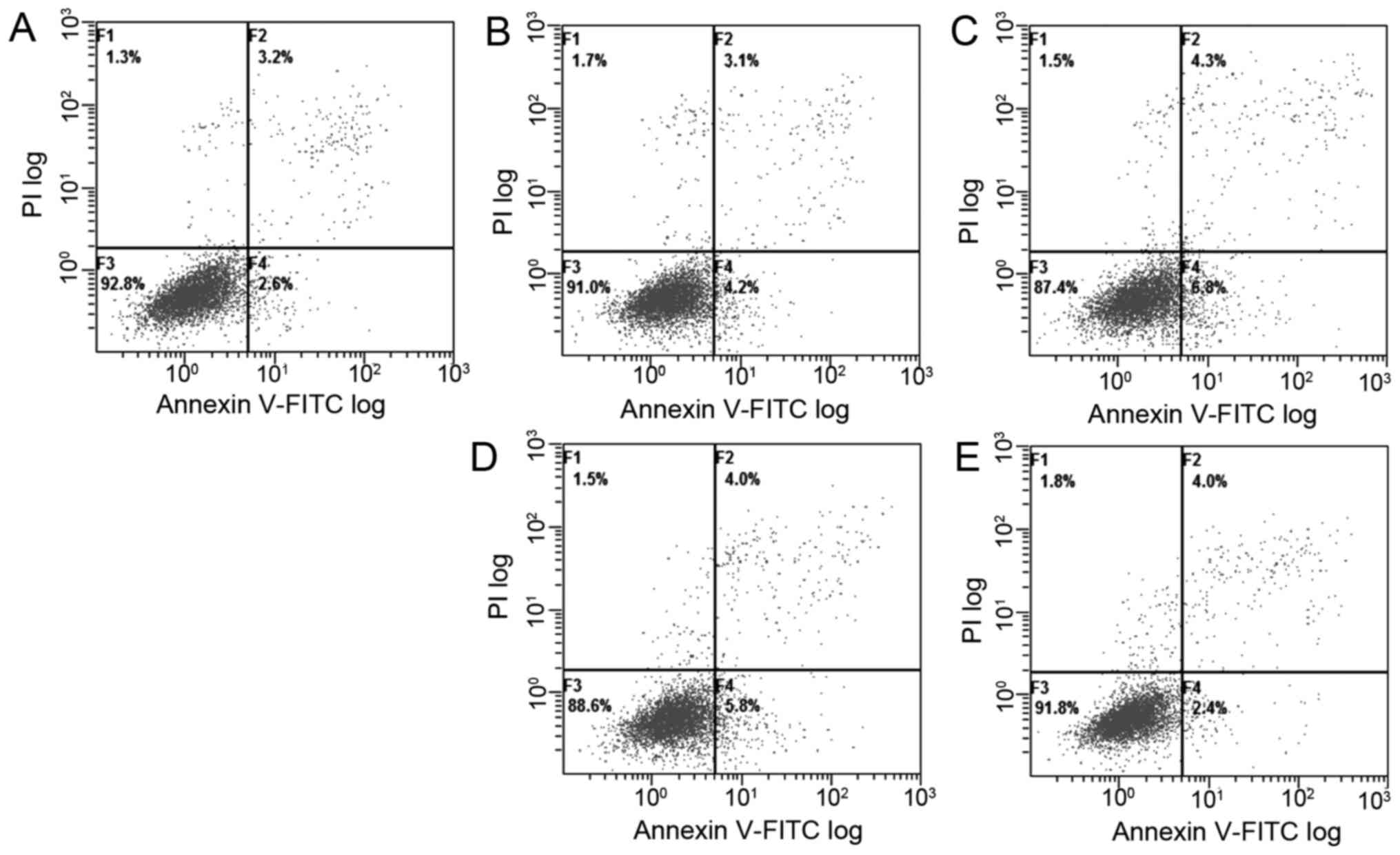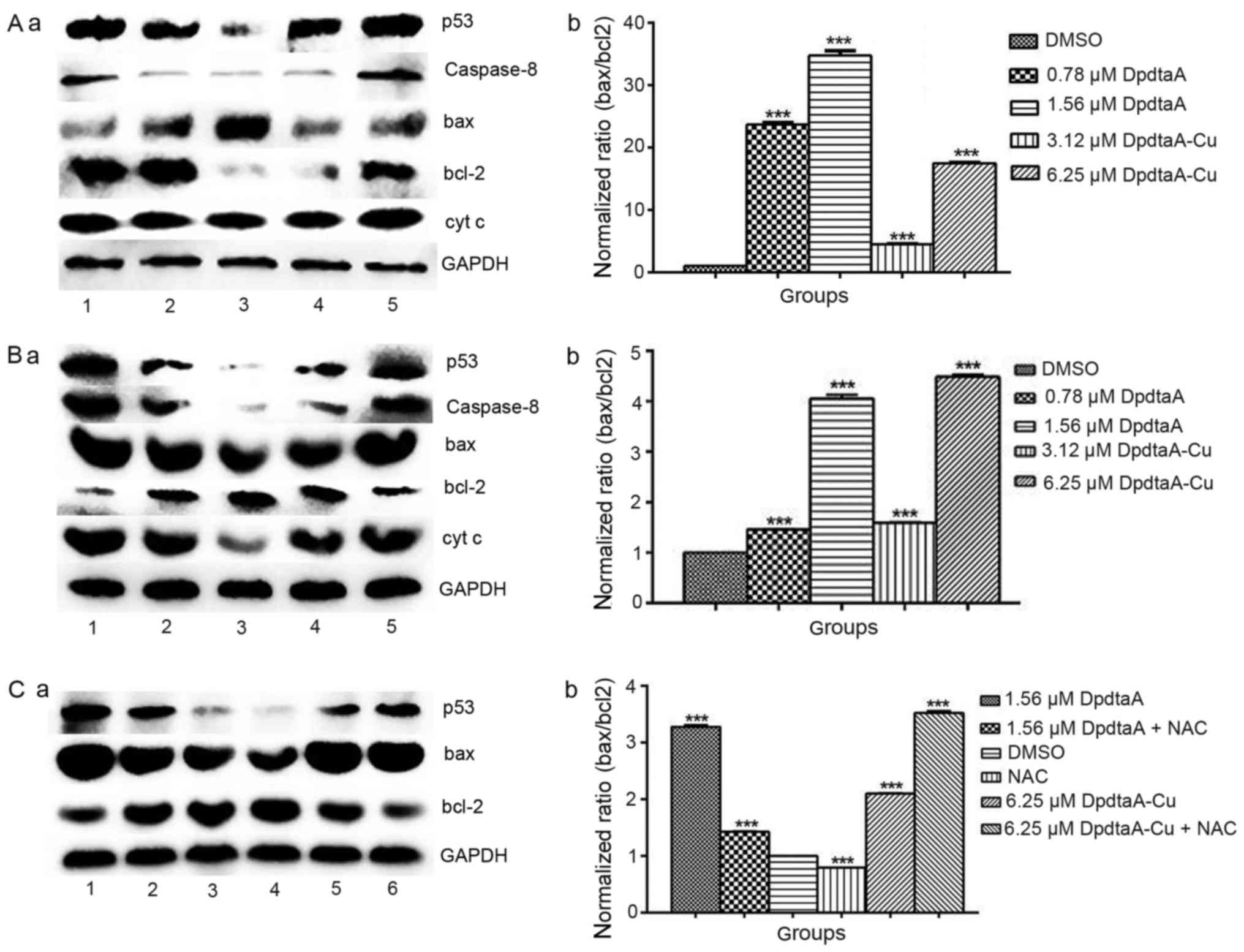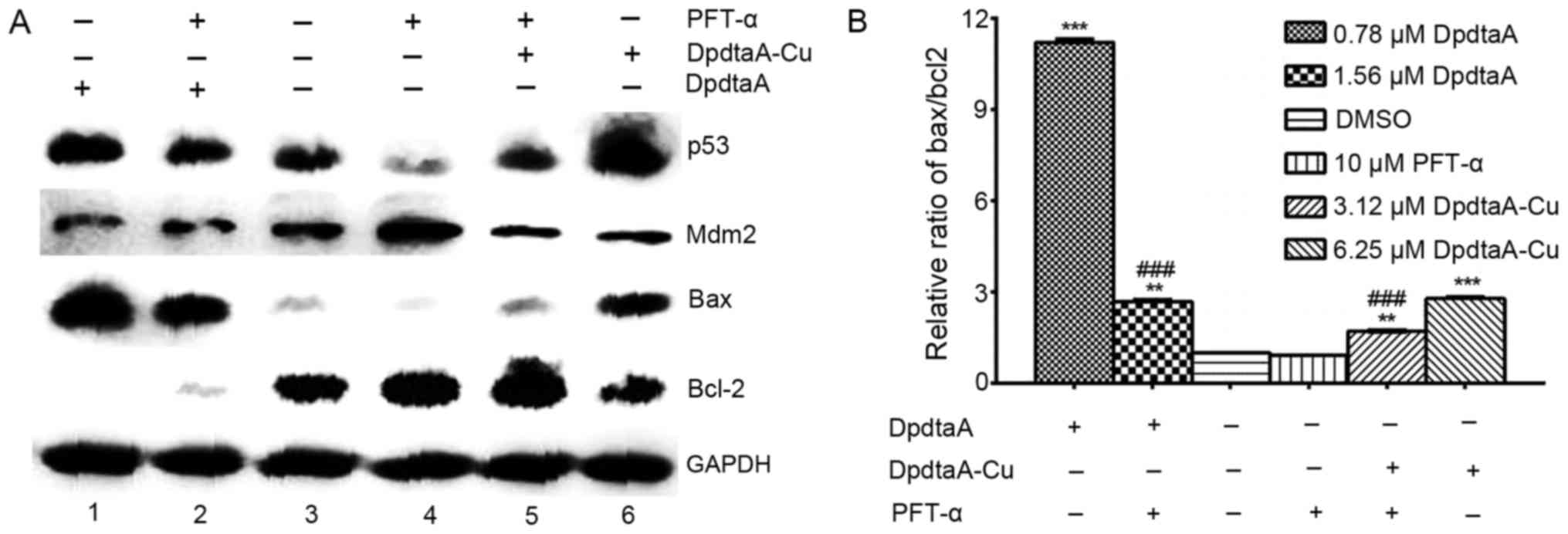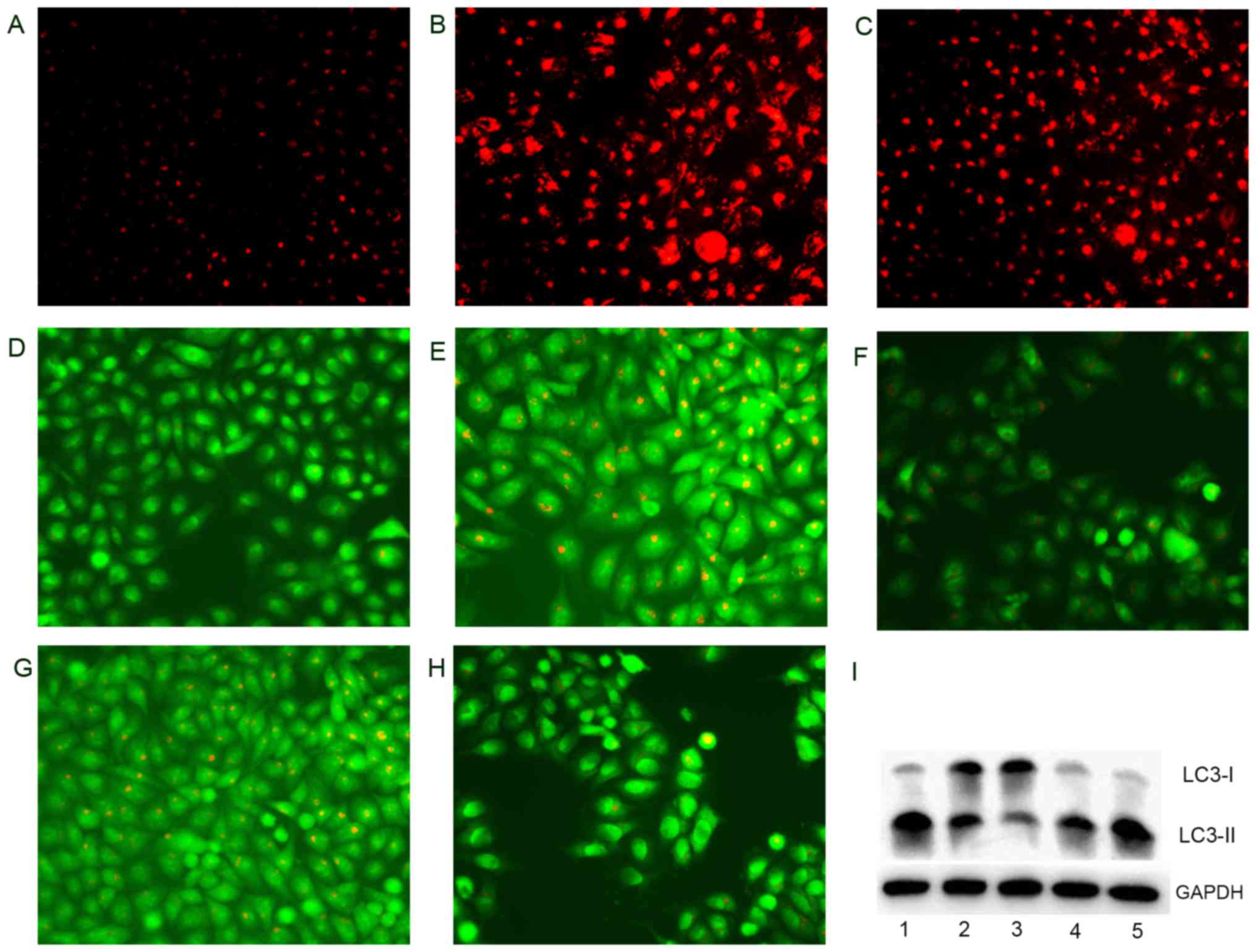|
1
|
Spano D and Zollo M: Tumor
microenvironment: A main actor in the metastasis process. Clin Exp
Metastasis. 29:381–395. 2012. View Article : Google Scholar : PubMed/NCBI
|
|
2
|
Catalano V, Turdo A, Di Franco S, Dieli F,
Todaro M and Stassi G: Tumor and its microenvironment: A
synergistic interplay. Semin Cancer Biol. 23:522–532. 2013.
View Article : Google Scholar : PubMed/NCBI
|
|
3
|
Sounni NE and Noel A: Targeting the tumor
microenvironment for cancer therapy. Clin Chem. 59:85–93. 2013.
View Article : Google Scholar
|
|
4
|
Khan G and Merajver S: Copper chelation in
cancer therapy using tetrathiomolybdate: An evolving paradigm.
Expert Opin Investig Drugs. 18:541–548. 2009. View Article : Google Scholar : PubMed/NCBI
|
|
5
|
Bogaard HJ, Mizuno S, Guignabert C, Al
Hussaini AA, Farkas D, Ruiter G, Kraskauskas D, Fadel E, Allegood
JC, Humbert M, et al: Copper dependence of angioproliferation in
pulmonary arterial hypertension in rats and humans. Am J Respir
Cell Mol Biol. 46:582–591. 2012. View Article : Google Scholar :
|
|
6
|
Buac D, Schmitt S, Ventro G, Kona FR and
Dou QP: Dithiocarbamate-based coordination compounds as potent
proteasome inhibitors in human cancer cells. Mini Rev Med Chem.
12:1193–1201. 2012. View Article : Google Scholar : PubMed/NCBI
|
|
7
|
Li Y, Qi H, Li X, Hou X, Lu X and Xiao X:
A novel dithiocarbamate derivative induces cell apoptosis through
p53-dependent intrinsic pathway and suppresses the expression of
the E6 oncogene of human papillomavirus 18 in HeLa cells.
Apoptosis. 20:787–795. 2015. View Article : Google Scholar : PubMed/NCBI
|
|
8
|
Wang XJ, Xu HW, Guo LL, Zheng JX, Xu B,
Guo X, Zheng CX and Liu HM: Synthesis and in vitro antitumor
activity of new butenolide-containing dithiocarbamates. Bioorg Med
Chem Lett. 21:3074–3077. 2011. View Article : Google Scholar : PubMed/NCBI
|
|
9
|
Mansouri-Torshizi H, Saeidifar M, Khosravi
F, Divsalar A, Saboury AA and Hassani F: DNA binding and antitumor
activity of α-diimineplatinum(II) and palladium(II) dithiocarbamate
complexes. Bioinorg Chem Appl. 2011:3945062011. View Article : Google Scholar
|
|
10
|
Milacic V, Chen D, Ronconi L,
Landis-Piwowar KR, Fregona D and Dou QP: A novel anticancer
gold(III) dithiocarbamate compound inhibits the activity of a
purified 20S proteasome and 26S proteasome in human breast cancer
cell cultures and xenografts. Cancer Res. 66:10478–10486. 2006.
View Article : Google Scholar : PubMed/NCBI
|
|
11
|
Nardon C, Schmitt SM, Yang H, Zuo J,
Fregona D and Dou QP: Gold(III)-dithiocarbamato peptidomimetics in
the forefront of the targeted anticancer therapy: Preclinical
studies against human breast neoplasia. PLoS One. 9:e842482014.
View Article : Google Scholar : PubMed/NCBI
|
|
12
|
Cattaruzza L, Fregona D, Mongiat M,
Ronconi L, Fassina A, Colombatti A and Aldinucci D: Antitumor
activity of gold(III)-dithiocarbamato derivatives on prostate
cancer cells and xenografts. Int J Cancer. 128:206–215. 2011.
View Article : Google Scholar
|
|
13
|
Schreck R, Meier B, Männel DN, Dröge W and
Baeuerle PA: Dithiocarbamates as potent inhibitors of nuclear
factor kappa B activation in intact cells. J Exp Med.
175:1181–1194. 1992. View Article : Google Scholar : PubMed/NCBI
|
|
14
|
Ronconi L, Marzano C, Zanello P, Corsini
M, Miolo G, Maccà C, Trevisan A and Fregona D: Gold(III)
dithiocarbamate derivatives for the treatment of cancer: Solution
chemistry, DNA binding, and hemolytic properties. J Med Chem.
49:1648–1657. 2006. View Article : Google Scholar : PubMed/NCBI
|
|
15
|
Nobel CSI, Burgess DH, Zhivotovsky B,
Burkitt MJ, Orrenius S and Slater AF: Mechanism of dithiocarbamate
inhibition of apoptosis: Thiol oxidation by dithiocarbamate
disulfides directly inhibits processing of the caspase-3 proenzyme.
Chem Res Toxicol. 10:636–643. 1997. View Article : Google Scholar : PubMed/NCBI
|
|
16
|
Wu HH, Thomas JA and Momand J: p53 protein
oxidation in cultured cells in response to pyrrolidine
dithiocarbamate: A novel method for relating the amount of p53
oxidation in vivo to the regulation of p53-responsive genes.
Biochem J. 351:87–93. 2000. View Article : Google Scholar : PubMed/NCBI
|
|
17
|
Wu HH and Momand J: Pyrrolidine
dithiocarbamate prevents p53 activation and promotes p53 cysteine
residue oxidation. J Biol Chem. 273:18898–18905. 1998. View Article : Google Scholar : PubMed/NCBI
|
|
18
|
Verhaegh GW, Richard MJ and Hainaut P:
Regulation of p53 by metal ions and by antioxidants:
Dithiocarbamate down-regulates p53 DNA-binding activity by
increasing the intracellular level of copper. Mol Cell Biol.
17:5699–5706. 1997. View Article : Google Scholar : PubMed/NCBI
|
|
19
|
Wang T, Fu Y, Huang T, Liu Y, Wu M, Yuan
Y, Li S and Li C: Copper ion attenuated the antiproliferative
activity of di-2-pyri-dylhydrazone dithiocarbamate derivative;
however, there was a lack of correlation between ROS generation and
antiproliferative activity. Molecules. 21:10882016. View Article : Google Scholar
|
|
20
|
Yang Y, Li C, Fu Y, Liu Y, Zhang Y, Zhang
Y, Zhou P, Yuan Y, Zhou S, Li S, et al: Redox cycling of a copper
complex with benz-aldehyde nitrogen mustard-2-pyridine carboxylic
acid hydrazone contributes to its enhanced antitumor activity, but
no change in the mechanism of action occurs after chelation. Oncol
Rep. 35:1636–1644. 2016. View Article : Google Scholar : PubMed/NCBI
|
|
21
|
Huang T and Li C, Sun X, Zhu Z, Fu Y, Liu
Y, Yuan Y, Li S and Li C: The antitumor mechanism of
di-2-pyridylketone 2-pyridine carboxylic acid hydrazone and its
copper complex in ROS generation and topoisomerase inhibition, and
hydrazone involvement in oxygen-catalytic iron mobilization. Int J
Oncol. 47:1854–1862. 2015. View Article : Google Scholar : PubMed/NCBI
|
|
22
|
DeLano WL: The PyMOL Molecular Graphics
System. DeLano Scientific; San Carlos, CA, USA: 2002
|
|
23
|
Laskowski RA and Swindells MB: LigPlot+:
Multiple ligand-protein interaction diagrams for drug discovery. J
Chem Inf Model. 51:2778–2786. 2011. View Article : Google Scholar : PubMed/NCBI
|
|
24
|
Trott O and Olson AJ: AutoDock Vina:
Improving the speed and accuracy of docking with a new scoring
function, efficient optimization, and multithreading. J Comput
Chem. 31:455–461. 2010.
|
|
25
|
Paris C, Bertoglio J and Bréard J:
Lysosomal and mitochondrial pathways in miltefosine-induced
apoptosis in U937 cells. Apoptosis. 12:1257–1267. 2007. View Article : Google Scholar : PubMed/NCBI
|
|
26
|
Brooks CL and Gu W: p53 ubiquitination:
Mdm2 and beyond. Mol Cell. 21:307–315. 2006. View Article : Google Scholar : PubMed/NCBI
|
|
27
|
Kruse JP and Gu W: Modes of p53
regulation. Cell. 137:609–622. 2009. View Article : Google Scholar : PubMed/NCBI
|
|
28
|
Haupt Y, Maya R, Kazaz A and Oren M: Mdm2
promotes the rapid degradation of p53. Nature. 387:296–299. 1997.
View Article : Google Scholar : PubMed/NCBI
|
|
29
|
Shangary S and Wang S: Small-molecule
inhibitors of the MDM2-p53 protein-protein interaction to
reactivate p53 function: A novel approach for cancer therapy. Annu
Rev Pharmacol Toxicol. 49:223–241. 2009. View Article : Google Scholar :
|
|
30
|
Johansson AC, Appelqvist H, Nilsson C,
Kågedal K, Roberg K and Ollinger K: Regulation of
apoptosis-associated lysosomal membrane permeabilization.
Apoptosis. 15:527–540. 2010. View Article : Google Scholar : PubMed/NCBI
|
|
31
|
Rehman SU, Zubair H, Sarwar T, Husain MA,
Ishqi HM, Nehar S and Tabish M: Redox cycling of Cu(II) by
6-mercaptopurine leads to ROS generation and DNA breakage: Possible
mechanism of anticancer activity. Tumour Biol. 36:1237–1244. 2015.
View Article : Google Scholar
|
|
32
|
Fussell KC, Udasin RG, Gray JP, Mishin V,
Smith PJ, Heck DE and Laskin JD: Redox cycling and increased oxygen
utilization contribute to diquat-induced oxidative stress and
cytotoxicity in Chinese hamster ovary cells overexpressing
NADPH-cytochrome P450 reductase. Free Radic Biol Med. 50:874–882.
2011. View Article : Google Scholar : PubMed/NCBI
|
|
33
|
Kello M, Drutovic D, Chripkova M, Pilatova
M, Budovska M, Kulikova L, Urdzik P and Mojzis J: ROS-dependent
antiproliferative effect of brassinin derivative homobrassinin in
human colorectal cancer Caco2 cells. Molecules. 19:10877–10897.
2014. View Article : Google Scholar : PubMed/NCBI
|
|
34
|
Donadelli M, Dando I, Zaniboni T, Costanzo
C, Dalla Pozza E, Scupoli MT, Scarpa A, Zappavigna S, Marra M,
Abbruzzese A, et al: Gemcitabine/cannabinoid combination triggers
autophagy in pancreatic cancer cells through a ROS-mediated
mechanism. Cell Death Dis. 2:e1522011. View Article : Google Scholar : PubMed/NCBI
|
|
35
|
Chripkova M, Zigo F and Mojzis J:
Antiproliferative effect of indole phytoalexins. Molecules.
21:16262016. View Article : Google Scholar
|
|
36
|
Gillardon F, Wickert H and Zimmermann M:
Up-regulation of bax and down-regulation of bcl-2 is associated
with kainate-induced apoptosis in mouse brain. Neurosci Lett.
192:85–88. 1995. View Article : Google Scholar : PubMed/NCBI
|
|
37
|
Amaral JD, Xavier JM, Steer CJ and
Rodrigues CM: The role of p53 in apoptosis. Discov Med. 9:145–152.
2010.PubMed/NCBI
|
|
38
|
Chen Y, Azad MB and Gibson SB: Methods for
detecting autophagy and determining autophagy-induced cell death.
Can J Physiol Pharmacol. 88:285–295. 2010. View Article : Google Scholar : PubMed/NCBI
|
|
39
|
Paglin S, Hollister T, Delohery T, Hackett
N, McMahill M, Sphicas E, Domingo D and Yahalom J: A novel response
of cancer cells to radiation involves autophagy and formation of
acidic vesicles. Cancer Res. 61:439–444. 2001.PubMed/NCBI
|
|
40
|
Lin J, Huang Z, Wu H, Zhou W, Jin P, Wei
P, Zhang Y, Zheng F, Zhang J, Xu J, et al: Inhibition of autophagy
enhances the anticancer activity of silver nanoparticles.
Autophagy. 10:2006–2020. 2014. View Article : Google Scholar : PubMed/NCBI
|
|
41
|
Donohue E, Thomas A, Maurer N, Manisali I,
Zeisser-Labouebe M, Zisman N, Anderson HJ, Ng SS, Webb M, Bally M,
et al: The autophagy inhibitor verteporfin moderately enhances the
antitumor activity of gemcitabine in a pancreatic ductal
adenocarcinoma model. J Cancer. 4:585–596. 2013. View Article : Google Scholar : PubMed/NCBI
|
|
42
|
Zhang X, Xu Q, Zhang Z, Cheng W, Cao W,
Jiang C, Han C, Li J and Hua Z: Chloroquine enhanced the anticancer
capacity of VNP20009 by inhibiting autophagy. Sci Rep. 6:297742016.
View Article : Google Scholar : PubMed/NCBI
|
|
43
|
Serrano-Puebla A and Boya P: Lysosomal
membrane permeabilization in cell death: New evidence and
implications for health and disease. Ann N Y Acad Sci. 1371:30–44.
2016. View Article : Google Scholar
|
|
44
|
Aits S and Jäättelä M: Lysosomal cell
death at a glance. J Cell Sci. 126:1905–1912. 2013. View Article : Google Scholar : PubMed/NCBI
|
|
45
|
Bové J, Martínez-Vicente M, Dehay B,
Perier C, Recasens A, Bombrun A, Antonsson B and Vila M: BAX
channel activity mediates lysosomal disruption linked to Parkinson
disease. Autophagy. 10:889–900. 2014. View Article : Google Scholar : PubMed/NCBI
|
|
46
|
Guan JJ, Zhang XD, Sun W, Qi L, Wu JC and
Qin ZH: DRAM1 regulates apoptosis through increasing protein levels
and lysosomal localization of BAX. Cell Death Dis. 6:e16242015.
View Article : Google Scholar : PubMed/NCBI
|
|
47
|
Fu Y, Yang Y, Zhou S, Liu Y, Yuan Y, Li S
and Li C: Ciprofloxacin containing Mannich base and its copper
complex induce antitumor activity via different mechanism of
action. Int J Oncol. 45:2092–2100. 2014. View Article : Google Scholar : PubMed/NCBI
|
|
48
|
Oberle C, Huai J, Reinheckel T, Tacke M,
Rassner M, Ekert PG, Buellesbach J and Borner C: Lysosomal membrane
permeabilization and cathepsin release is a Bax/Bak-dependent,
amplifying event of apoptosis in fibroblasts and monocytes. Cell
Death Differ. 17:1167–1178. 2010. View Article : Google Scholar : PubMed/NCBI
|
|
49
|
Yang Y, Huang T, Zhou S, Fu Y, Liu Y, Yuan
Y, Zhang Q, Li S and Li C: Antitumor activity of a
2-pyridinecarboxaldehyde 2-pyridinecarboxylic acid hydrazone copper
complex and the related mechanism. Oncol Rep. 34:1311–1318. 2015.
View Article : Google Scholar : PubMed/NCBI
|
|
50
|
Cvek B, Milacic V, Taraba J and Dou QP:
Ni(II), Cu(II), and Zn(II) diethyldithiocarbamate complexes show
various activities against the proteasome in breast cancer cells. J
Med Chem. 51:6256–6258. 2008. View Article : Google Scholar : PubMed/NCBI
|
|
51
|
Cvek B and Dvorak Z: Targeting of nuclear
factor-kappaB and proteasome by dithiocarbamate complexes with
metals. Curr Pharm Des. 13:3155–3167. 2007. View Article : Google Scholar : PubMed/NCBI
|
|
52
|
Yu Z, Wang F, Milacic V, Li X, Cui QC,
Zhang B, Yan B and Dou QP: Evaluation of copper-dependent
proteasome-inhibitory and apoptosis-inducing activities of novel
pyrrolidine dithiocarbamate analogues. Int J Mol Med. 20:919–925.
2007.PubMed/NCBI
|
|
53
|
Skrott Z and Cvek B:
Diethyldithiocarbamate complex with copper: The mechanism of action
in cancer cells. Mini Rev Med Chem. 12:1184–1192. 2012. View Article : Google Scholar : PubMed/NCBI
|
|
54
|
Zhang H, Wu JS and Peng F: Potent
anticancer activity of pyrrolidine dithiocarbamate-copper complex
against cisplatin-resistant neuroblastoma cells. Anticancer Drugs.
19:125–132. 2008. View Article : Google Scholar : PubMed/NCBI
|
|
55
|
Zhu C, Hu W, Wu H and Hu X: No evident
dose-response relationship between cellular ROS level and its
cytotoxicity - a paradoxical issue in ROS-based cancer therapy. Sci
Rep. 4:50292014. View Article : Google Scholar
|















